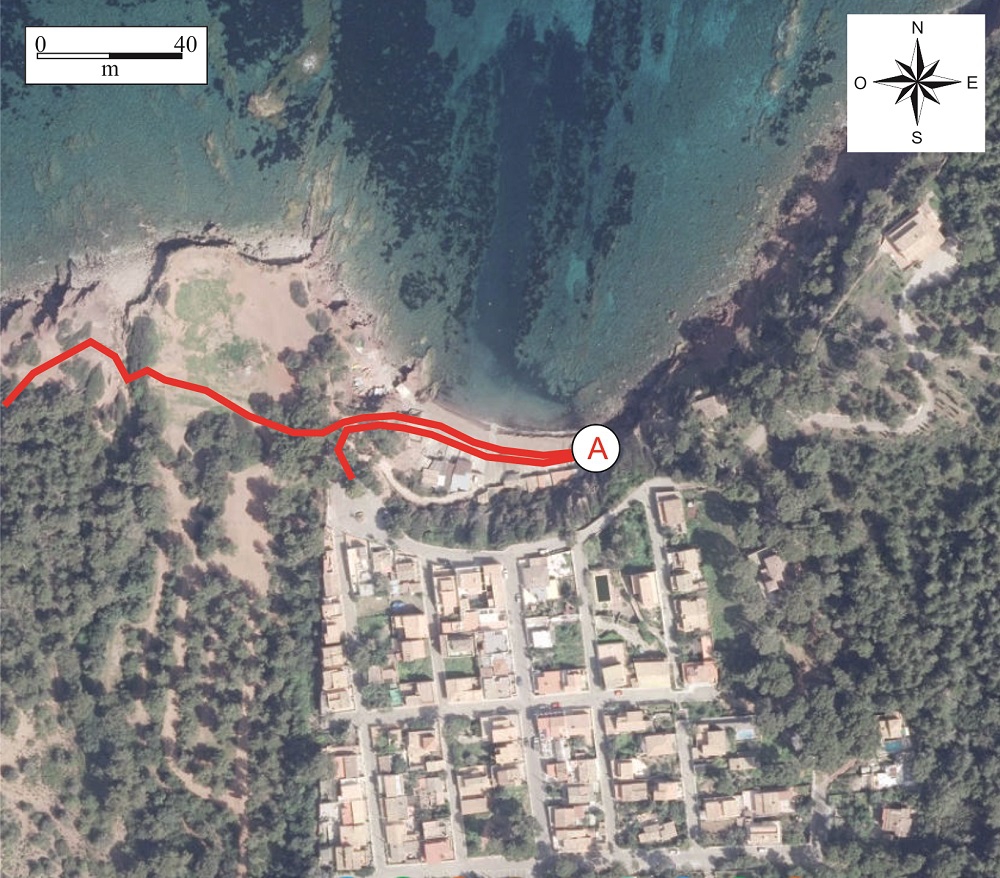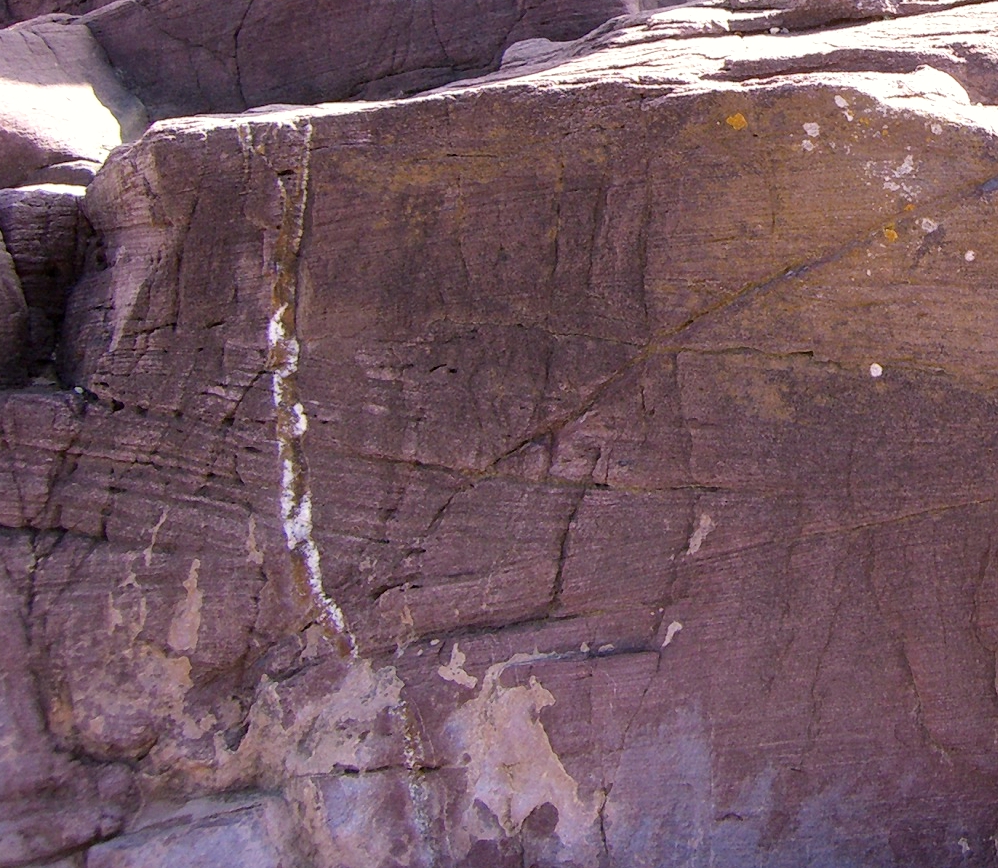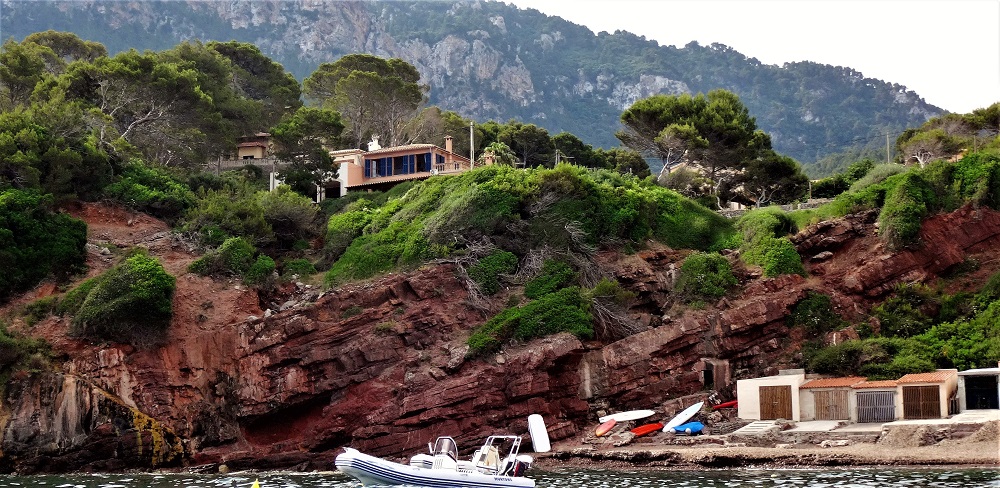| UTM-X | UTM-Y | ||
|---|---|---|---|
| STOP 1: THE PERMIAN OF CALA GATA | |||
| STOP 2: THE QUATERNARY OF SON BUNYOLA | |||
| STOP 3: THE MIOCENE OF BEC DE S’ÀGUILA | |||
| STOP 4: THE THRUST FAULT OF ES CAVALL |

Recommended route.
The small coastal village of Port des Canonge stands on one of the island’s oldest terrains, which are some 260 Ma old and correspond to the Buntsandstein, stratigraphic unit and reflect the specific environmental conditions in which they were formed.</p><p><br></p></div>">facies belonging to the Permian (299-251 Ma). In fact, they date from long before the formation of the island and correspond partly to the ancient supercontinent of Pangaea. Most of the outcrops from this epoch in the island are located in the coast of Banyalbufar, and most extensively at Port des Canonge. At Cala Gata the coastal erosion has uncovered a number of geological cross-sections which greatly facilitate their observation and study.
The most typical rock found in the area is a rough rock of maroon-red colour which corresponds to a lithified sand (sand-sized clasts.</p><p><br></p></div>">sandstone) deposited by ancient rivers. Looking closely, we can see that it displays a structure in inclined sheets that cut across each other. This type of structure is named cross-stratification and is due to the action of a current of water.

Cross-stratification in the sandstones.
In contrast with the great majority of rocks of the island, which are carbonatic (composed mainly of calcite and dolomite), the rocks of the Mallorcan Permian are siliceous (consisting mainly of quartz), which makes them especially abrasive and earns them the popular name of pedres d’esmolar, “sharpening stones”.
This atypical composition in the local geological record is in fact the predominant one in materials of the epoch and is due to the fact that these rocks originated in the erosion of ancient reliefs formed in turn by siliceous rocks like granite. The red colour of the formations we can study at Cala Gata and in other nearby zones is due to the fact that they contain a high percentage of iron oxides.

Permian sandstone cliffs in Cala Gata.
This type of sedimentary environments do not tend to be propitious for the conservation of fossil remains, only a few traces of reptiles and a very few indeterminate osseous remains being known until recent times. This was the case until the discovery a few years ago of what proved to be one of the most important fossils ever found in the Balearics, with worldwide relevance. It is a fragment of the upper jaw of a captorhinid, a rare herbivorous reptile proper to the Permian.
Fragment of a jaw of a captorhinid found at Cala Gata. Image taken from Liebrechtet al (2016).